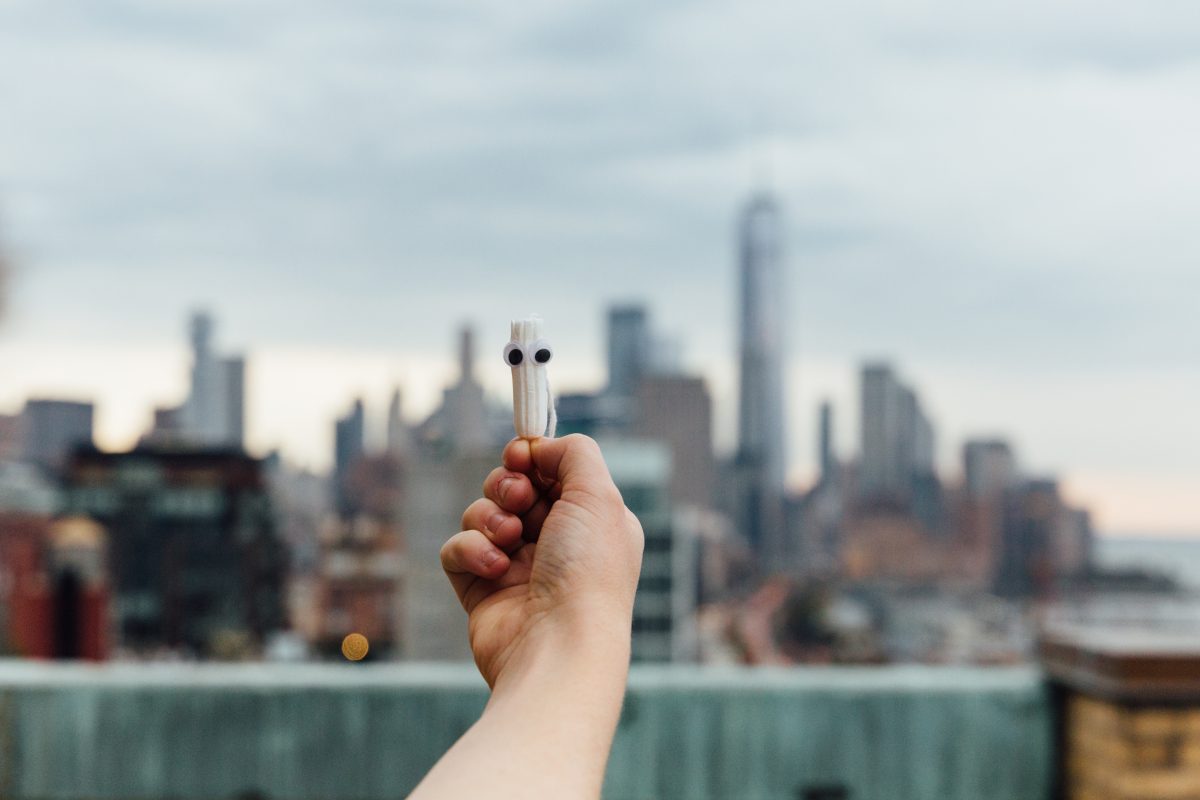Drag as an art form has always been considered subversive. However, there are many misconceptions about drag. For example, drag is not simply a man dressing as a woman or vice versa. Drag is a complex beast—its truth contained within its self reflexive nature and being. The most integral protesters in the Stonewall* riots were trans women of color and drag performers. Drag is beyond protest because drag itself is a protest. It is a protest of modern ideals of masculinity and femininity.
Drag is often presented as campy, with an emphasis on hyperfemininity on drag queens and hypermasculinity for drag kings. Perhaps this is due to the fact that the mainstream representation of drag comes from a popular television show called “RuPaul’s Drag Race,” a reality television show in which typically cisgender gay men transform into glamorous drag queens. The show is both heartfelt and destructive. This representation of drag is biased and exclusive because the drag queens who present as male outside of their alter ego are the most popular. This recent aestheticization of beauty via drag exemplifies the evolution of drag from a movement similar to punk rock, to the sleek, mainstream, ultra-glamorous world of RuPaul.
The acceptance of drag into common culture is due in part to the evolution of its aesthetics and understanding of gender. The first important documented proof of drag queens is from 18th century England. However, ancient Greeks’ plays or even Shakespeare could also be considered to have implemented drag. During the 1700s, the existence of queer people was illegal. Drag queens during this time performed in secret houses where gay men went to mingle and ultimately have sex. According to research by Michael Moncrieff and Pierre Lienard, these places were called “molly houses” which denoted low class ranking. The term “molly” also doubled as a slur used against gay people in the 18th century. The drag queens of this era were deemed the most basic conception of drag: female impersonators.
The progression of drag to its modern day aesthetics is important to understand the problematic nature of its current state. Perhaps the most popular drag queen known around the world is RuPaul. RuPaul first came into the public eye in the late 1980s and early 1990s with her provocative notions of gender. Drag was considered grungy and lowbrow at the time. RuPaul defied this notion. He* had a hit single, “Supermodel” (which Kurt Cobain declared as one of his favorite songs), participated in a drag festival known as Wigstock in Manhattan and had a short-lived talk show. Wigstock was a progressive experiment of self expression and a celebration of queer life. Videos from the festival show RuPaul in her typical blonde bombshell look. Perhaps this was the beginning of the end.
Since its inception, drag has been mostly pushed to gay bars and nightclubs. From the ball culture of 1980s New York where queer individuals gathered to participate in runway and dance competitions to the television behemoth that is “RuPaul’s Drag Race,” drag has drastically changed and been morphed into a capitalistic bastion of delusion.
Drag’s marketability has skyrocketed due to “RuPaul’s Drag Race.” However, this is not without issue. The show is racist—it perpetuates the white victim trope while furthering the angry black woman trope. The show is classist—poor queens are expected to have the same standards as queens that are affluent and/or more popular than them. The show is transphobic—recently RuPaul talked with the Guardian about whether she would let transgender contestants compete in the show.
“Probably not. You can identify as a woman and say you’re transitioning, but it changes once you start changing your body,” RuPaul said. “It takes on a different thing; it changes the whole concept of what we’re doing. We’ve had some girls who’ve had some injections in the face and maybe a little bit in the butt here and there, but they haven’t transitioned.” The reception of RuPaul’s interview with the Guardian was inflammatory and rightfully so. His hurtful remarks about transgender people just exemplify his misunderstanding of drag. In episodes of Drag Race, Ru often points out “tuck problems.” These tuck problems refer to the genital area where drag queens typically tuck their penis back in order to appear to have a vagina. RuPaul’s criticism of this is confusing. Is this to say that women cannot have penises? What constitutes a real woman?
The suggestion of transness as an aesthetic is highly damaging to transgender individuals. Trans and non-binary individuals are too often criticized for just existing. Too often have these people been told that if they don’t want people to point at them and laugh, then they should not make a spectacle of themselves. There is no spectacle. There is no glamour. Drag is a multitude of aesthetics and self representations. Drag can be anything you want it to be. There is no one way to engage in drag because there are no set boundaries. Despite the freedom of drag, aesthetic ideals of beauty and womanhood have become most prominent in the outside world’s perception of drag.
The subjective realism of drag remains subversive despite the current glamorous provocation of the art form. This narrow conception of drag continues to flourish under the influence of “RuPaul’s Drag Race.” Its current status as a mainstream obsession has cemented its status in modern culture. I do not hate the show. In fact, I relish in it. However, I also understand the deep internal and external forces that keep the show from showcasing the full variety of drag. The aesthetics of drag— whether for drag queens, kings or anything in between—lies in the simple notion of meddling with gender. Drag does not have a clear definition at this point. The aesthetics of an art form at this point in time, in which it has become such a unique and sensational part of society, cannot be explained. Drag, like the individuality of people, is different from one performer to the next. The secret behind the aesthetics of drag is that there are no secrets. Gender is a social construct that drag seeks and has always sought to subvert. It’s too bad that subversion has been cashed in for a check of $100,000*
1st * : The Stonewall riots are said to be the roots of the modern American gay liberation movement. During the 1960s, gay bars were often subject to raids from the police due to hostility toward the queer community. The Stonewall Inn in Greenwich Village, New York City was one of the few bars to embrace the queer community during this era. On June 28, 1969, police raided the Stonewall Inn. However, this raid did not go according to plan— hundreds of queer people both within the bar and from the street gathered to protest the police. They began chanting, “gay power!” The protest turned violent when the police started to attack protesters, who continued protesting into the next night. Leaders of the riots included Marsha P Johnson, a black transgender woman, and Sylvia Rivera, a Puerto Rican trans activist. These events ultimately led to the irst gay pride celebration in 1970.
2nd *: RuPaul’s pronoun changes throughout the piece to exemplify the gender luidity within the drag community.
3rd*: $100,000 is the amount of cash that the winner of a season of RuPaul’s Drag Race receives.








![[Photo Courtesy of the Lara Family]
Ruben embraces his beloved childhood goat, Katrina.](https://ethos.dailyemerald.com/wp-content/uploads/2025/05/katrina-1-1060x1200.jpg)


